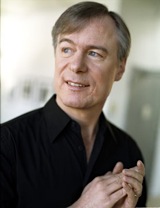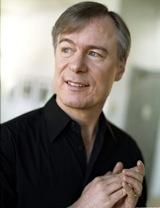Second nights are notoriously difficult to pull off, whether they’re in the theater or the concert hall. But David Robertson and the St. Louis Symphony blazed through the second of two programs Sunday at Davies Symphony Hall, sustaining the excitement they had generated on the previous evening and elevating even the most familiar repertoire to the level of the sublime.

Presented as part of the San Francisco Symphony’s Great Performers series, both programs demonstrated the qualities of unity and refinement Robertson has achieved with this ensemble since his appointment in 2005. The conductor, whose frequent guest appearances with the S.F. Symphony always yield bracing results, has forged a cohesive ensemble in St. Louis, raising the formerly troubled orchestra’s profile to one of the more admired in the nation.
Sunday’s event paired two works by Stravinsky and two by Mozart — the former’s Danses Concertantes and Violin Concerto in D Major, and the latter’s Violin Concerto No. 2 in D Major and Symphony No. 36 in C Major, “Linz.” At first glance, the program appeared the least interesting of the two; after Saturday’s opening concert, which had featured a beguiling mix of old and new (see SFCV’s review), the pairing of Mozart and Stravinsky hardly represented a daring programming choice from Robertson, a conductor often acclaimed as a champion of new works.
Not that there’s anything wrong with tracing a line between Mozart’s classical masterworks and Stravinsky’s neoclassical period — many conductors have done so, and Robertson made the line seem indelible. But there’s nothing particularly innovative about the approach, either. And, as the evening progressed, the appearance of violin soloist Gil Shaham (who is also Robertson’s brother-in-law) in both concertos began to seem a little too much of a good thing.
Still, the rewards were in the music-making. Robertson, as always, proved a powerful and persuasive advocate for each work on the program, and what the listener came away with was the sound of the orchestra — and a brilliant, uncommonly distinctive sound it is.
Dances Charming and Jaunty
The evening started with a richly expressive performance of Stravinsky’s Danses Concertantes. Composed in 1941 for 24 players, this is a charming work of five connected movements, and Robertson and his small ensemble played it with considerable brio. The conductor set a brisk, vivacious tempo in the opening march, drawing transparent textures and superb individual contributions from his chamber ensemble. The violins played with furious energy, buzzing like a small hive; the woodwinds sounded delightfully serene. Throughout the performance, Stravinsky’s jaunty rhythms, restless melodies, and boisterous outbursts came across with poise.
Shaham, who had achieved mixed results with Prokofiev’s Violin Concerto No. 2 on Saturday, returned with greater focus on Sunday. His performance in Stravinsky’s challenging Violin Concerto garnered the biggest response from the audience. Yet his most sublime moments came in the Mozart concerto. Here, he played with marvelous allure, dispatching the opening movement’s long-breathed phrases with lovely, silken tone. Robertson balanced the interplay between orchestra and soloist with consummate mastery. If the dynamics weren’t as ideally calibrated in the Andante movement, Shaham’s performance nevertheless continued to shine, unfurling Mozart’s aria for violin on a slender thread of sound colored with delicate applications of vibrato. In the finale, Robertson elicited graceful playing all around.
After intermission, the Stravinsky Violin Concerto cast its customarily restless spell, though Robertson intermittently struggled to marshal his forces and Shaham plunged ahead heedless of the conductor’s tempo settings. There were flashes of what this ensemble is capable of — the horns played with particular finesse, and Robertson ensured a propulsive finale — but this was a performance in which the argument didn’t always cohere.
Unity was restored in the closing performance of Mozart’s “Linz” Symphony. Here again, Robertson seemed in complete control. This is one of the composer’s most familiar, easygoing symphonies, yet the conductor and his orchestra made it sound as bracing and fearless as a new work.

